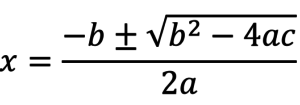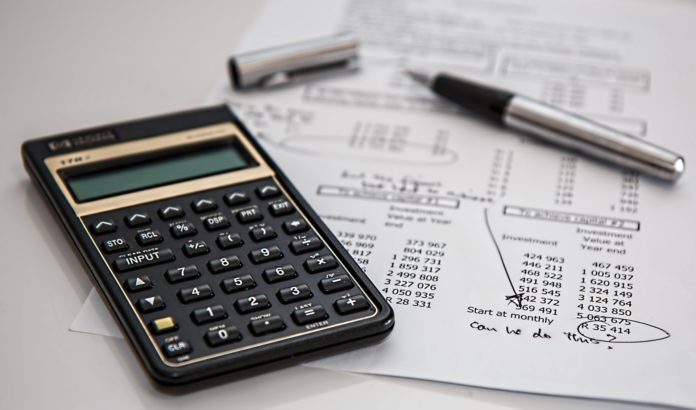Since SBI has released its notification, a lot of students have been asking us how to prepare Quantitative Aptitude for SBI PO. Quant forms an integral part of both SBI PO prelims and mains exam. Looking at the SBI PO previous year papers, we can notice that 35 questions are asked from this section. Thus, one cannot emphasize enough about the importance of this section in cracking the SBI PO exam. Also read about Quantitative aptitude for IBPS PO.
But the good news is Quantitative Aptitude for SBI PO can be your lifeline to ace both these exams. The reason is this section is easy to master, and one can attempt this section with very high accuracy. The other two sections i.e. Verbal and Reasoning are sometimes unpredictable. No matter how much you prepare, you cannot minimize the unpredictability involved. So students should not neglect Quantitative Aptitude for SBI PO. Familiarize yourself with quant section by answering the previous papers and mock tests of SBI PO.
We have seen many students who were really weak at Quant but eventually aced SBI PO with a major chunk of their scores coming from this section. But this needs careful planning and strategy. Students often waste their time learning shortcuts and tricks. But these shortcuts and tricks are only helpful once you are well versed with the basic concepts.
Let’s us first see the rough structure of a typical Quantitative Aptitude for SBI PO.
Contents
Quantitative Aptitude for SBI PO 2017 – Pattern
Main Topics of Quantitative Aptitude for SBI PO Prelims
| Question Type | Number of questions |
| Number Series | 5 |
| Simplification | 0-5 |
| Approximation | 0-5 |
| Data Interpretation | 5 |
| Quadratic Equations | 0-5 |
| Miscellaneous | 10-15 |
| Total | 35 |
Main Topics of Quantitative Aptitude for SBI PO Mains
| Question Type | Number of questions |
| Data Interpretation | 20 |
| Miscellaneous | 15 |
| Total | 35 |
Miscellaneous questions in both the papers are from varied topics such as Number Systems for SBI PO, Geometry, Time-Distance and Work, Averages, Mixtures and Allegations, Profit and Loss, Data Sufficiency, etc.
Strategy, Tips, and Tricks for Quantitative Aptitude for SBI PO
Number Series
Number Series questions are quick and easy to solve if you are able to spot the pattern. The difficult part is to identify this pattern since there is no particular limit to it. These patterns are easy to spot once you have enough practice under your belt.
The series questions can broadly be classified into three varieties-
- Arithmetic Progression
- Geometric Progression
- Exponential Series
With practice, one can easily spot the variety of the number series which further make it much easier to spot the pattern.
For example: 45, 58, 71, 84, 97, ?
Now, it is easy to spot that this series isn’t a Geometric Progression as the ratios of successive terms are not same.
We can also see that all the ratios lie between 1 and 2. Thus, we can also rule out Exponential Series as in such series the ratios increase exponentially.
Thus, this series might be an Arithmetic Progression. Let’s check it.
58-45 = 13, 71-58 = 13, 84-71 = 13 and so on. Thus, the next term should be 97+13 = 110
But students should be careful and should not spend too much time on a single question. If you can’t spot the pattern in 3-4 tries, you will probably not get it.
Simplification/Approximation
These questions are fairly easy to solve and involve concepts we learned in class 5th to 8th. But one can easily gain a competitive edge over the competitors by practicing a lot of question. So, solve a lot of questions involving BODMAS rule, approximations, percentages, Surds, square, cubes, square roots, etc.
Learning tricks and exercising mental calculations can help you save up a lot of time during the exam. So, learn the percentage equivalents of common fractions such as 1/3, 1/4, 1/5, 1/8, 1/9, 1/11, 1/12, 1/15, 1/16, etc.
For example- 62.5% of 112
Now solving it in the traditional way will eat up a lot of your valuable time. However, if I break down 62.5 into 5 X 12.5%, the question can be solved in a jiffy!
(5 X 12.5)% of 112
12.5% is equivalent to 1/8 => 62.5% = 5/8
So, (5 X 12.5)% of 112 = 5/8 X 112 = 70
| Take a free Mock for IBPS PO (in the latest pattern) |
Data Interpretation
This is one of the most dreaded section of the Quantitative Aptitude for SBI PO as these questions are calculation intensive. But it is very important to pay attention to Data Interpretation questions as they make a major chunk of the SBI PO Mains exam.
The commonly asked Data Interpretation for SBI PO questions are:
- Tables
- Line Graphs
- Bar Charts
- Pie Charts
Familiarity with each of these varieties is instrumental in scoring high in such questions. So practice at least 20-25 sets of each variety in the months following up to the examination. Quick calculation skills are very important to such questions as they help you in maximizing your attempts. Moreover, if you are good at mental calculations, you can solve many questions just by eliminating the options.
Quadratic Equations
Quadratic equations for IBPS PO and SBI PO are one of the easiest questions in the Quantitative Aptitude for SBI PO. All you need to know is the Roots formula (Sri Dharacharya Rule) i.e.

Where x represents the roots of the equation
![]()
A typical example of such question is:
 Finding the roots of both these equations by the Dharacharya Rule, we get,
Finding the roots of both these equations by the Dharacharya Rule, we get,
x = 7/2, 11 and y = 3, 2
So, we can see that X>Y.
Yeah, it’s that easy to solve!
Miscellaneous Questions
This involves questions from the following set of topics:
- Number Systems – Remainders, LCM-HCF, Divisibility Rules, Fractions, Factors
- Speed, Time, and Distance – Upstream/Downstream, Trains, Circular Motion
- Time & Work – Pipes and Cisterns, Work done by people, Partnerships
- Permutations & Combinations – Arrangements and Distributions
- Probability
- Algebra
- Geometry and Mensuration – Triangles, Circles, Squares, Cone, Cylinder, Sphere
- Mixtures & Allegations – Averages, Alloy Mixtures, Cost of Mixtures
- Data Sufficiency
- Ratio and Proportions
Questions on these topics require you to be thoroughly acquainted with the concepts. Some of the topics are relatively easy to master such as Time and Work, Mixture and Allegations, Ratio and Proportions, and Algebra.
So, it is wise to take up these topics early in your preparations. This will ensure that you will be able to solve about 50% of such questions. Having such assurance in the back of your mind will keep you motivated.
Maximizing Scores in SBI bank PO Aptitude Questions and Answers
I have seen many students spending months in tricky chapters such as Probability, Permutations and Combinations, Speed Time and Distance, etc. The strategy should be first to clear the cut-offs and then to maximize the scores. A very small portion of the exam will be from such tricky chapters. But one should be aware that these topics will be helpful to score a good rank.
So, the early part of your preparation strategy should be focussed to master the easier questions. This forms around 50-60% of the Quantitative Aptitude for SBI PO and will help you to clear the cut-offs.
Study Strategy for Quantitative Aptitude for SBI PO
Spend the first few months on the easier topics such as-
- Simplification/Approximation
- Number Series
- Quadratic Equations
- Ratio and Proportions
- Time and Work
- Mixture and Allegations
- Averages
Moreover, you should regularly practice DI as it takes a lot of time to master them.
Once you are comfortable with these topics move on to trickier topics such as Probability, Permutations and Combinations, Time Speed and Distance, Data Sufficiency etc.
The final part of the preparation is taking a lot of mocks, sectional tests and solving previous year papers. This will help you to devise test taking strategies that maximize your score. Further, it will also help you in accessing your strengths and weaknesses and identify the mistakes that you commonly repeat.
With the strategies we just discussed, I am sure you will find preparation for Quantitative Aptitude for SBI PO much easier. Remember it takes 3 sections to ace SBI PO. So, don’t neglect the Quant section and keep practicing Quantitative Aptitude questions and answers for SBI PO!
Also check out our excellent blogs on-
Seating Arrangement Questions for SBI PO
Input Output Questions for SBI PO 2017
7 Tips to solve Syllogism Questions for SBI PO





![How To Manage Time In CAT Exam? [Section-wise Tips] How to manage time in CAT exam ?](https://cracku.in/blog/wp-content/uploads/2018/09/fig-03-09-2018_10-54-46-218x150.jpg)